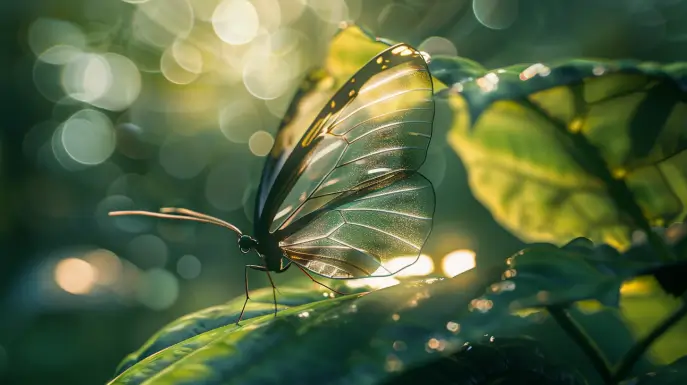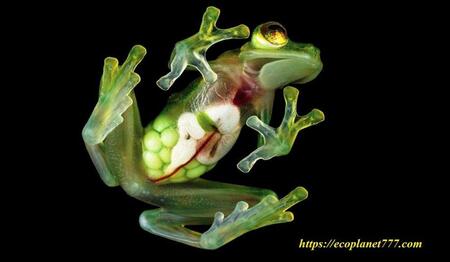Transparent glass-skinned animals are found throughout the world, from frogs to fish and butterflies, and most often use their translucent skin as a defense against predators.
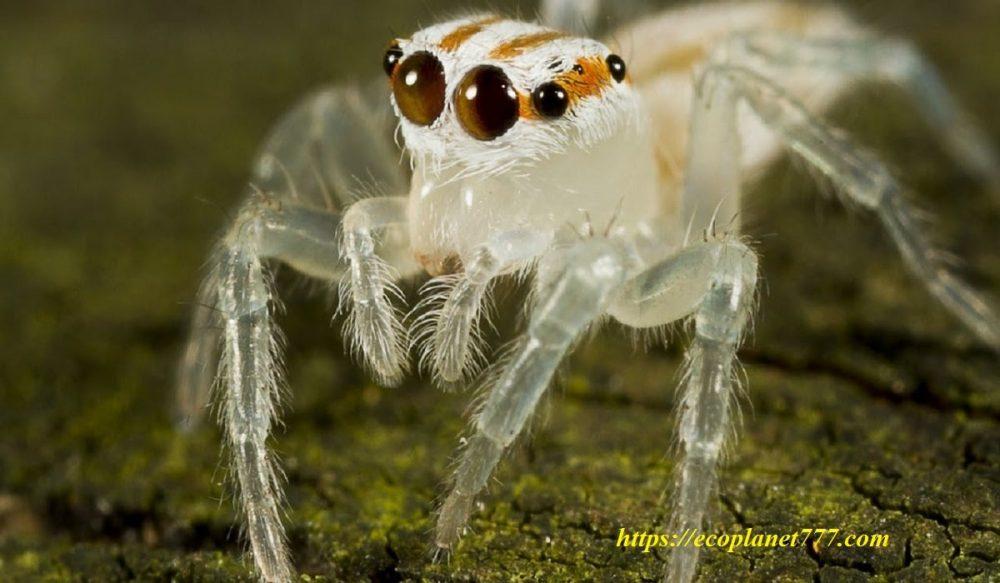
You’ve probably heard a lot about the ability of some animals to blend in with their surroundings by choosing colors, stripes, spots and patterns that give them natural camouflage. What about becoming completely transparent? Transparent animals have also evolved in response to their environment and literally hide from their prey in plain sight. From butterflies to fish, frogs, snails and more, the transparency of nature can be found in the sky and in the deep waters of the seas. Most often, transparency occurs in these animals at a young age and may disappear as they mature, but some species retain their transparency throughout their lives.
Let’s learn a little more about the different types of transparent, glassy animals that lurk around us.
Transparent animals
Transparent butterfly with glass wings

Butterflies of the Greta Oto species are usually called clear-winged or glass butterflies.
Glass butterflies are found from Mexico to Panama and also in Ecuador and have a wingspan of 5.6 to 6.1 cm wide.
It is believed that their transparent wings make these butterflies less visible in flight. Unlike other animal species, the glasswing butterfly does not have colored scales, so the tissue between the veins of its wings looks like glass.
The glass-winged butterfly (Greta oto) looks like it has pieces of glass in its wings, like in a colorless stained glass window. The tips of the wings of this butterfly are colored, while the rest of the parts are transparent. Due to the special nanostructure, the wings of this butterfly do not reflect light. It consists of a “chaotic” arrangement of columnar structures of various sizes and shapes. The wings are so efficient that their design could serve as inspiration for the future design of glare-free computer and mobile phone screens.
|
Golden turtle beetle

These animals come in a variety of species, some of which, such as the club turtle (Plagiometriona clavata) from the eastern and southern United States, have a solid interior surrounded by a transparent shell. This beetle resembles a turtle on a tiny scale due to the shell on its back. Its length is 5 – 12mm.
In tropical environments, turtle beetles are very brightly colored. Often people use them to make jewelry. These beetles are also found in many places in eastern North America as far as Iowa and Texas.
|
European eel larvae
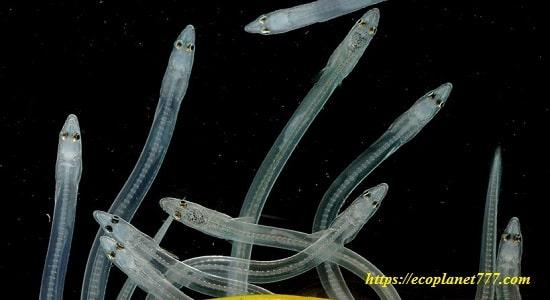
As an adult, the European eel lives in the estuaries of Europe and migrates to the Sargasso Sea around Bermuda to lay its eggs.
The European larvae, under the influence of the Gulf Stream, enter Europe. Since it would be quite easy for predatory fish to catch young eels on this journey home, nature has endowed them with a special protection – they remain completely transparent until they mature.
Unfortunately, over the past 45 years, the population of the European eel has declined significantly, and the number of eels that make it to Europe is about 10%.
Glass frog

This transparent arboreal amphibian has almost invisible skin on its belly, which exposes many internal organs such as the heart, gastrointestinal tract, and liver. The skin on the back is less transparent, but still has a glassy character with a greenish tinge.
Barton Springs Salamander (Barton Springs Salamander)

This rare species of transparent animal lives in the fresh water of Barton Springs, Texas and has no lungs. The translucent skin, giving him an albino appearance, allows him to see her internal organs, and sometimes even the food in her stomach.
Transparent animal in the water
Transparency (or translucency) does not mean that animals have nothing to hide. Conversely, the lack of pigmentation can help them elude predators that can literally see right through them.
Sea creatures that lack teeth, toxins, or the ability to quickly flee frompredators are endowed with some degree of invisibility.
The amount of light that can pass through their bodies ranges from 20 to 90 percent.
The main advantage of transparency in open water is that it provides camouflage at any depth and angle.
Transparent sea cucumber
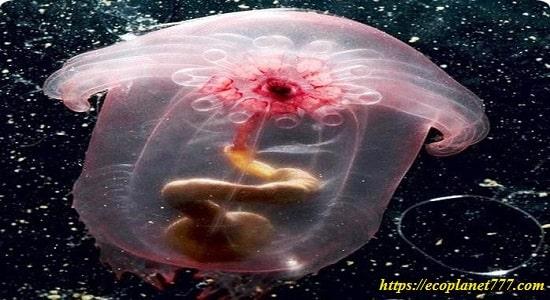
Soft-bodied inhabitants of the deep sea (sea cucumbers) are the oldest species of marine creatures that, over hundreds of millions of years of evolution, have developed many ways to survive in extreme conditions of high pressure and lack of light. For some sea cucumbers, it is transparency that allows them to be invisible to predators.
The slightly pink colored Enypniastes sea cucumbers live in the pitch black depths of the ocean well below the sunlight penetration threshold (200 m).
Barrel fish (barrel eye) with a transparent head

The Pacific barrelfish (Macropinna microstoma) was first described in 1939, but individual specimens of this unusual deep-sea fish suffered damage when brought to the surface due to extreme pressure drops.
In 2009, researchers at the Monterey Bay Aquarium Research Institute (MBARI) used remotely controlled cameras to observe barrels in their own habitat, at depths of 600 to 800 meters off the coast of central California. What they saw startled them greatly: the eyes of the goggle-eye revolve inside a transparent, fluid-filled headbox.
When viewed from above, the muzzle of the barrel looks natural, but what at first glance appear to be eyes are actually “nostrils”. The eyes are bright green structures located inside the fish’s head, where it can direct them to look up while itself remains horizontal.
Hydromedusa

It has an almost transparent body and is able to swim quite quickly, moving with pulsating jets of water.
It is better to keep your distance from the hydrojellyfish, as it can sting badly.
Spiked stingray
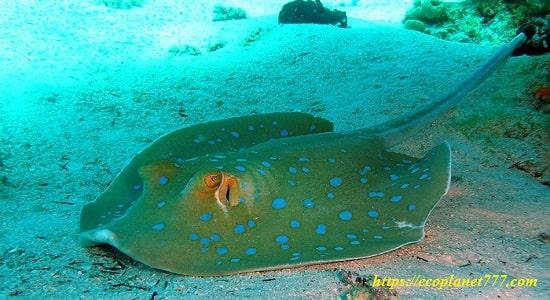
Raja Binoculata or the large spiked stingray is found from shallow coastal waters to a depth of approximately 580m. One such stingray swimming at great depths was spotted in San Pedro Bay, California.
|
Glass fish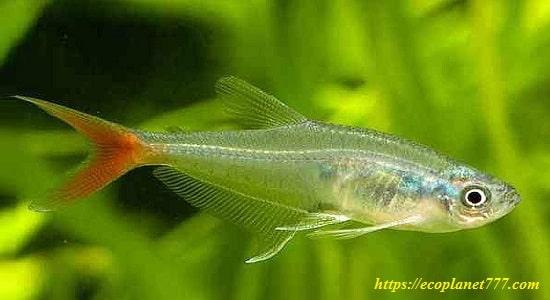
Glassfish are native to South Asia and travel in packs as they grow to only 8cm. in length.
Because of their transparency, these fish are very popular in home aquariums.
White shrimp (pearl)
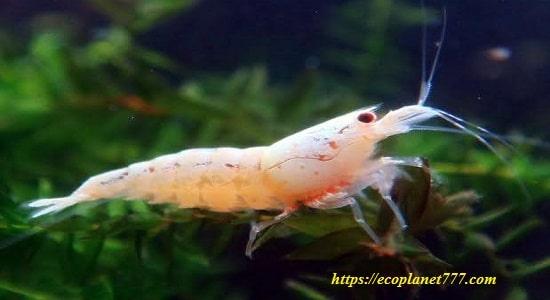
White shrimp grow up to 18cm. And their antennae can be three times as long as their body.
The white shrimp is one of three types of shrimp that are commercially harvested in the South Atlantic and the Gulf of Mexico.
Translucent Surgeonfish Fry
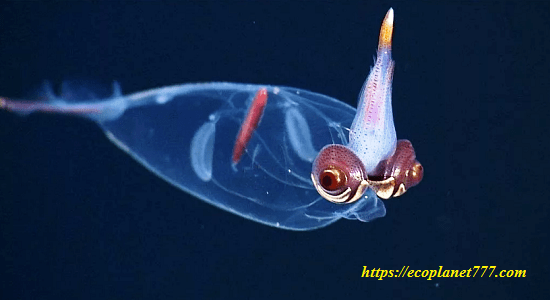
This fish looks like it’s a toy, but it’s actually real. The transparent fry of surgeonfish live in the waters around New Zealand and can grow to quite large sizes – 30cm.
But the fish is completely transparent only at a young age, and later it has characteristic blue and yellow marks.
Transparent octopus

The glass octopus is quite unusual and we don’t know much about this creature other than the fact that it has very sharp eyesight.
The length of a young octopus is less than 2 cm. across. Like many other animals on this list, some of them are transparent when young and become colored as adults.
|
Chaetognaths

These predators live in the polar region and feed on plankton. Predatory animals are mostly transparent or translucent. Their bodies are clearly divided into head, tail and torso. They are dart-shaped and covered with a cuticle.
Interesting facts about transparent animals
Paper nautilus

The paper nautilus is a cephalopod, also known as the argonaut, and lives in subtropical and tropical pelagic habitats.
|
Transparent goldfish
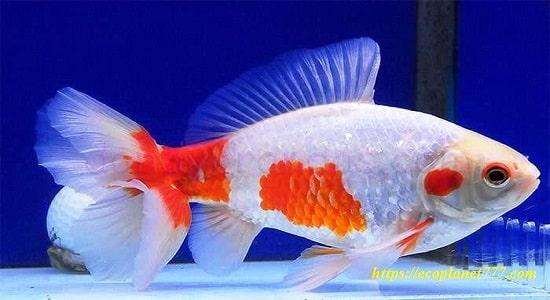
In late 2009, researchers at Mie University in Japan created a transparent goldfish by selectively breeding pale goldfish. The end result was a fish with translucent scales and skin through which many of the creature’s internal organs can be easily seen. “As this goldfish gets bigger, you can watch its entire life,” said Yutaka Tamaru, assistant professor at Mie University.
While people will no doubt demand the cultivation of transparent goldfish for their home aquariums, the real reason the researchers at Mi University created transparent goldfish was to reduce, or even eliminate, the need for fish dissections in biology classes. This should make the vast number of students who experience nausea during the dissection process happy, not to mention the deaths of countless fish.
P.S.
If you liked and found this information useful, please share it on social media. networks with your friends and acquaintances. This is how you support our project “Ecology of Life” and make your contribution to the preservation of the environment!
- Magnetic storms: the sun is testing the planet🌪️ - 13.06.2024
- Why You Should Drink Chicory: Benefits and Harms 🌿 - 09.06.2024
- Innovative Choice: Sproud Milk – Your Ideal Plant-Based Drink 🌱 - 03.06.2024
